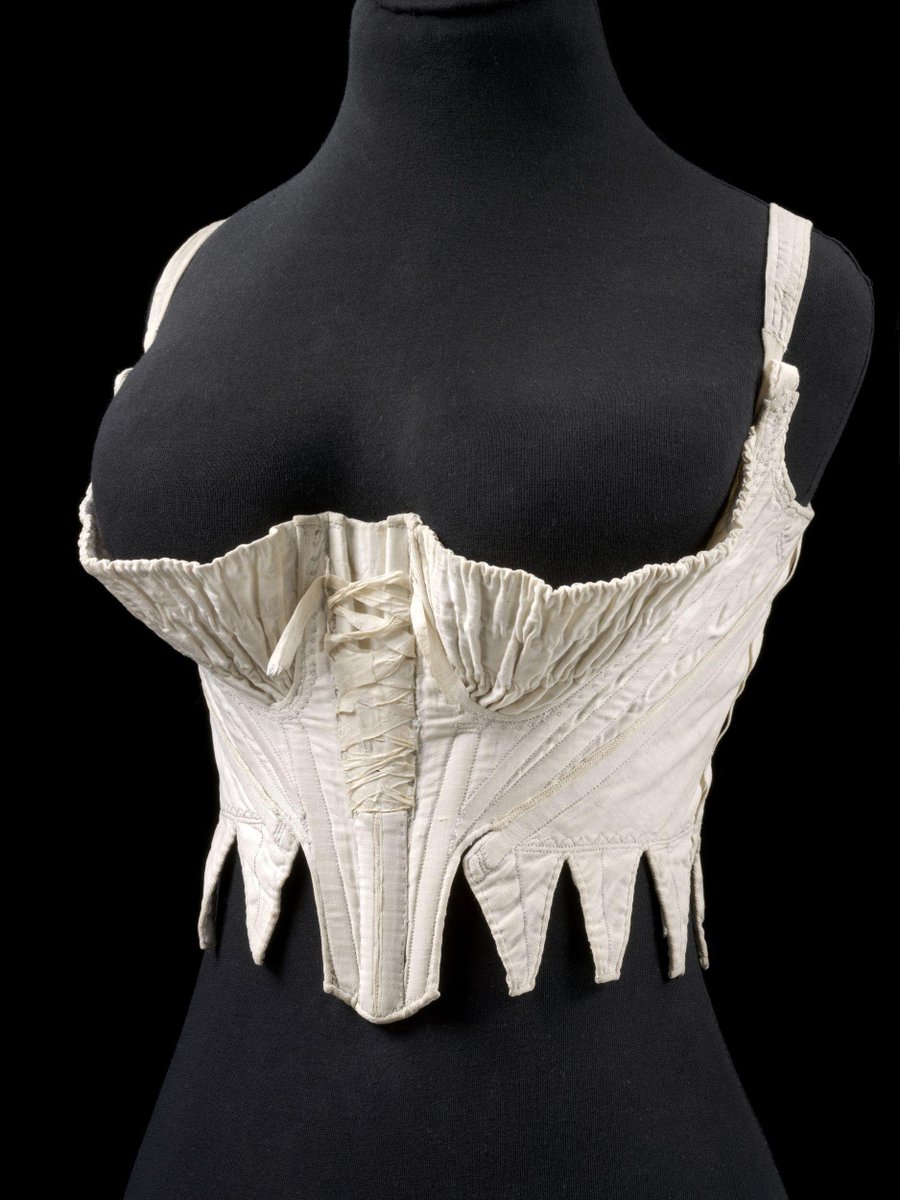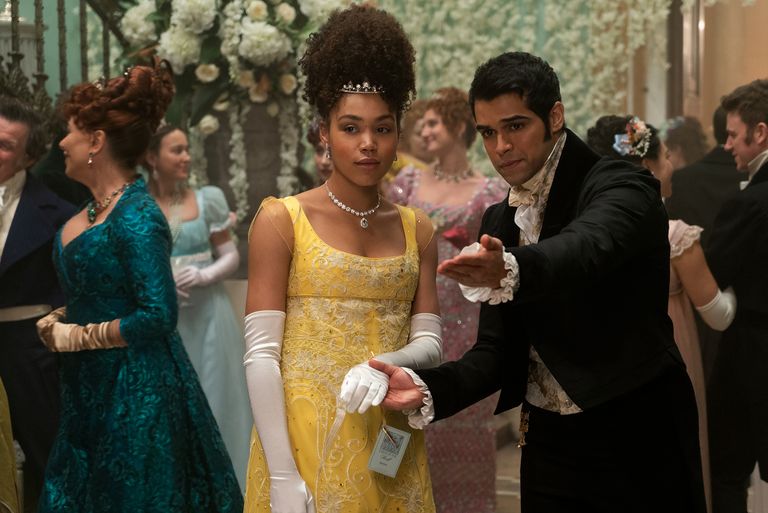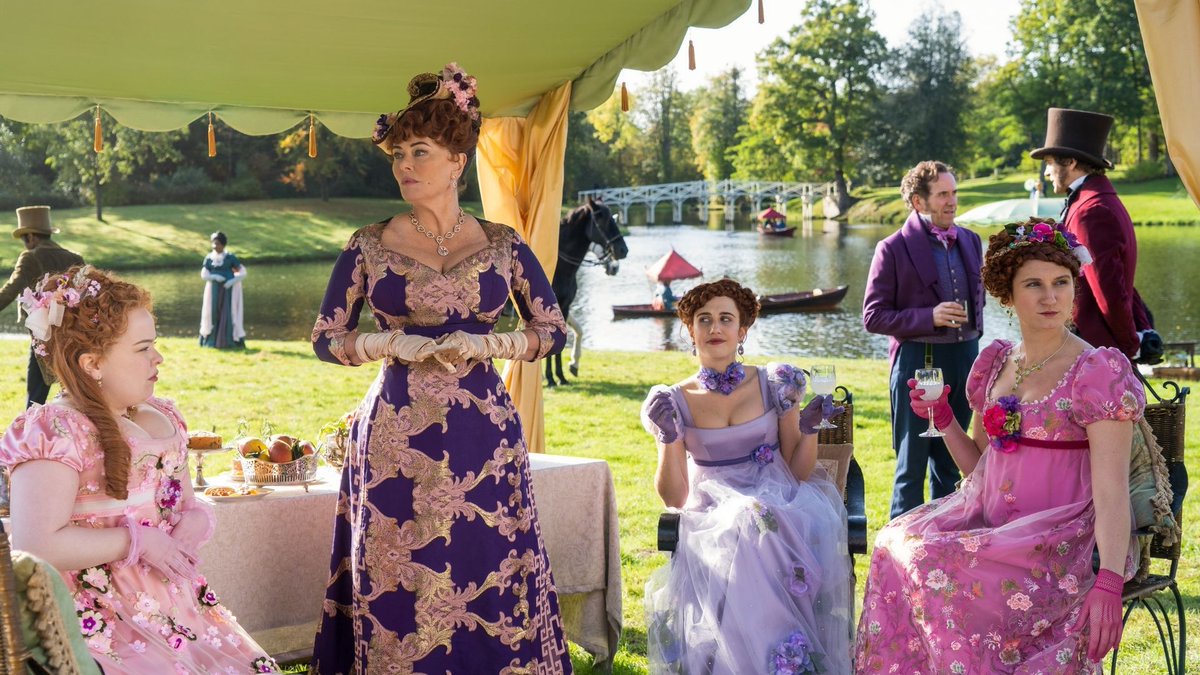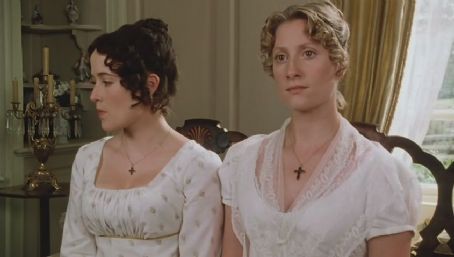Yesterday I read a very frustrating #Bridgerton interview that Said Some Things about corsets, and since today's pretty quiet (big snowstorm up here!) I thought I would do a thread on corsets of the late 18th-early 19th centuries.
Through most of the 18thc, the fashionable and respectable shape was one that could only be achieved with a foundation garment. As the latest Patterns of Fashion book shows us, there was a lot of craft that went into making a pair that truly fit an individual body. 

By the late 1790s, the fashionable shape was *much* different. It was now important to look "natural", with soft curves all over the place. Stays that molded the bust were out. So ... what *did* they wear? 

Recent research is turning up more and more of these oddly short and straight-up-and-down stays that almost certainly represent a common step in the transition: mimicofmodes.com/2019/03/transi…
At first glance, they just look like very basic stays, usually made out of boring fabric - but they were worn under the bust, making the shift taut to provide a more naturalistic but still present support! 



Fig Leaf Patterns also offers a graded pattern package: figleafpatterns.com/228-underbust-…
But this was not The Stays Type for the period. As a major transition into a new silhouette, we can find a lot of experimentation, some of which also made use of actual cups. (I tried to reproduce these from afar for my MA ... it didn't go so well.) 

It's really interesting to think of all the ingenuity that must have gone into individual stays/corsets of the period, when there was no one solution everyone was using! But by the Regency, the variety was collapsing, and one style was again the norm.
If you're at all into Regency stuff, you know it. White, slim, cups made with gussets, straps, pocket down the front for a busk. 

These did promote an overall slender body, but not specifically a narrow waist. Gowns didn't fit tight to the waist, so why bother? But it's important to remember that that doesn't mean they were made *as columns*.
Corsets made without enough curve are just as uncomfortable as corsets made too small in the waist, if not more so - they put pressure on the high hip and lower back. So Regency corsets very much reflect the shape of the wearers' bodies.
There's a tendency to assume that 1820s corsets are a bit curvier than 1810s, and 1830s ones curvier than 1820s ones, but since they're all made on the same principle - soft, relatively little engineering - they can't actually change the figure *too* much.
What I mean by "engineering" is the cutting and sewing of fabric into more complex shapes to achieve certain effects. For instance, this 1864 corset has curved hip panels that can flare out more sharply below the waist than the inserted gussets in Regency examples. 

It can be hard to date corsets from the 1810s-1830s because their reflection of the body rather than fashion means that you can't just recognize the silhouette as the fashionable one of 1810 or 1824 or 1836. This one dates to 1836, in fact! 

Cording was often used as embellishment as much as or more than actual support, so it's of limited use in dating. Beautiful, though! I wish we saw more decorative cording in corsets on film. 

When we do start seeing securely dateable features again, it tends to be very heavy cording specifically on the gussets/bust, because the fashionable silhouette in the late 1830s through 1850s was actually relatively flattened. 

But again, the overall curviness of the corset in the 1810s through 1830s is not a major key in dating them, because, tl;dr, they tend to reflect the actual shape of the body more than the fashionable silhouette.
(And now that I'm done, it's time to plug Dandies & Dandyzettes again! A new Regency ttrpg/writing guide - the Kickstarter will go live later this month, but you can sign up at the link below to be notified as soon as it's up.) kickstarter.com/projects/20462…
• • •
Missing some Tweet in this thread? You can try to
force a refresh












